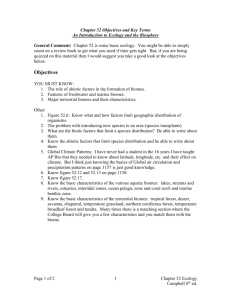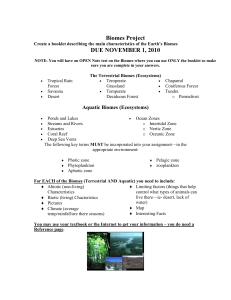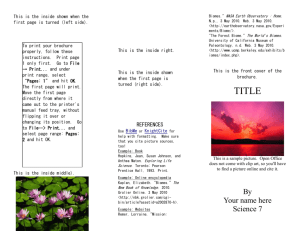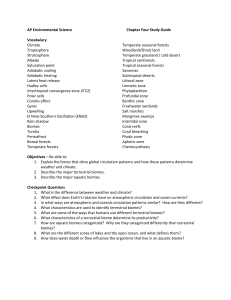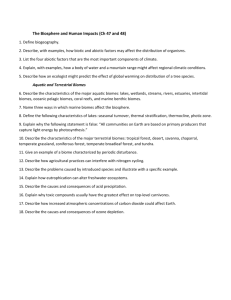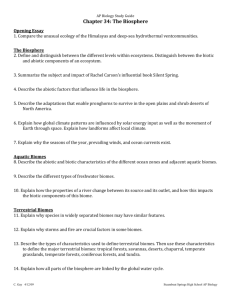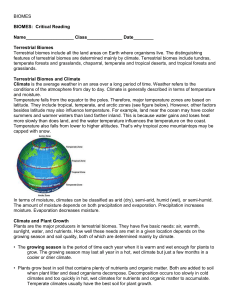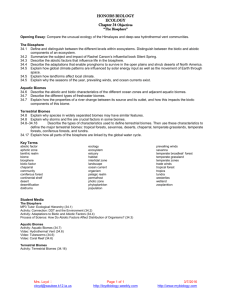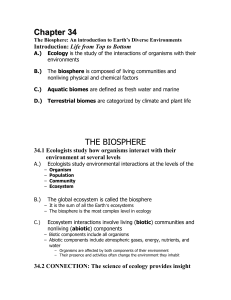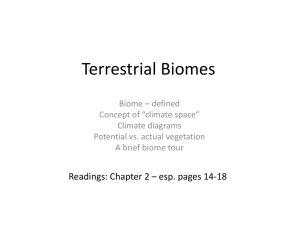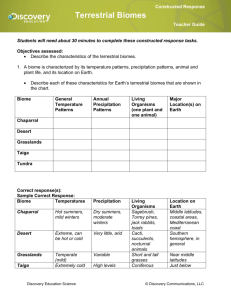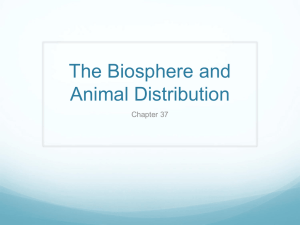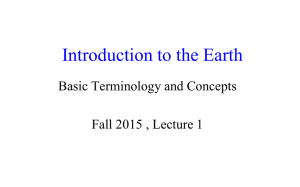BSC 1005
advertisement
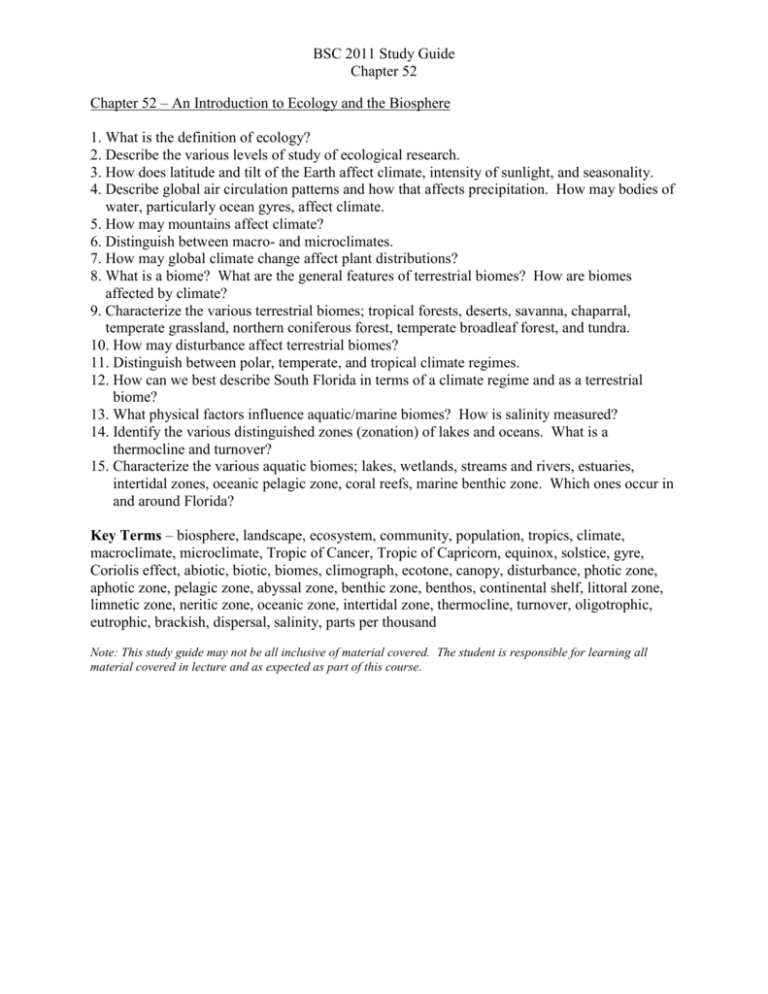
BSC 2011 Study Guide Chapter 52 Chapter 52 – An Introduction to Ecology and the Biosphere 1. What is the definition of ecology? 2. Describe the various levels of study of ecological research. 3. How does latitude and tilt of the Earth affect climate, intensity of sunlight, and seasonality. 4. Describe global air circulation patterns and how that affects precipitation. How may bodies of water, particularly ocean gyres, affect climate. 5. How may mountains affect climate? 6. Distinguish between macro- and microclimates. 7. How may global climate change affect plant distributions? 8. What is a biome? What are the general features of terrestrial biomes? How are biomes affected by climate? 9. Characterize the various terrestrial biomes; tropical forests, deserts, savanna, chaparral, temperate grassland, northern coniferous forest, temperate broadleaf forest, and tundra. 10. How may disturbance affect terrestrial biomes? 11. Distinguish between polar, temperate, and tropical climate regimes. 12. How can we best describe South Florida in terms of a climate regime and as a terrestrial biome? 13. What physical factors influence aquatic/marine biomes? How is salinity measured? 14. Identify the various distinguished zones (zonation) of lakes and oceans. What is a thermocline and turnover? 15. Characterize the various aquatic biomes; lakes, wetlands, streams and rivers, estuaries, intertidal zones, oceanic pelagic zone, coral reefs, marine benthic zone. Which ones occur in and around Florida? Key Terms – biosphere, landscape, ecosystem, community, population, tropics, climate, macroclimate, microclimate, Tropic of Cancer, Tropic of Capricorn, equinox, solstice, gyre, Coriolis effect, abiotic, biotic, biomes, climograph, ecotone, canopy, disturbance, photic zone, aphotic zone, pelagic zone, abyssal zone, benthic zone, benthos, continental shelf, littoral zone, limnetic zone, neritic zone, oceanic zone, intertidal zone, thermocline, turnover, oligotrophic, eutrophic, brackish, dispersal, salinity, parts per thousand Note: This study guide may not be all inclusive of material covered. The student is responsible for learning all material covered in lecture and as expected as part of this course.




